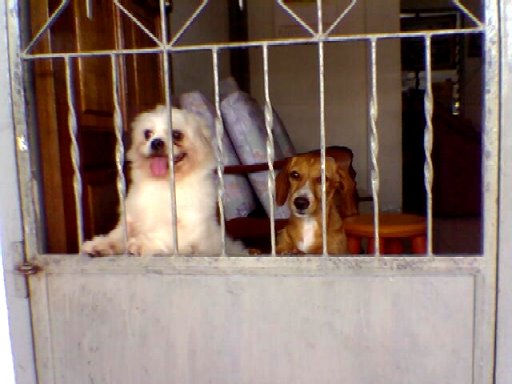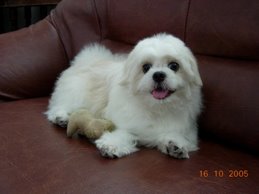Article From SubmitYOURArticle.com: How to Train Your Dog to Understand Your Commands Using Hand Signals
The idea that dog commands are best when spoken
is a very long held belief and many pet owners
have never thought to use a hand signal or other
body language when training their pet.
Fortunately, the trends in dog training are
changing, and most professional dog trainers that
you might meet will tell you that hand signals
are as effective as, if not more effective than,
vocal commands.
Hand signals have been heralded as a great idea
in dog training simply because they are very
effective and easy to perform. The thinking came
about due to the fact that barking only form a
small part of canine communication.
Vocalizations in a dog are useful at a distance,
but dogs bark at each other far less when in
close proximity to one another than when they are
some distance away. When two dogs meet up, body
language is often used to communicate. A dog's
body language and facial expression can
communicate a great deal of information to
another dog. While useful, it is not necessary
for a dog owner to understand all of a dog's
varied bits of body language.
Certainly dogs listen and can hear, but a dog is
much more comfortable reading their owner's
expressions and motions. Hand signals are much
closer to a dog's natural communication than a
spoken signal, so you may find that your dog
responds much better and more quickly to a hand
signal.
Your first step is simply to choose those signals
that your will use for each command. Make sure
you have decided on your signals before you begin
training, as changing the signals mid-training
will only serve to confuse your dog. You will
also want to make the hand signals very clear.
Hand signals that are very similar or too minute
will be difficult for your dog to understand.
Signals such as an open hand or a fist are very
effective.
Start off by rewarding your dog every time he
execute the command correctly. For example,
praise your dog and offer him a treat when he
gets the command right. Slowly begin integrating
the hand signals in. When your dog lies down,
show the hand signal at the same time as you say
your command. After that offer treat and praise
accordingly. After some time, you can start to
practice showing the hand signals only. There are
a lot of tricks that can be used to get a dog to
perform the correct actions such as holding a
treat in a fist above your dog's head to get him
to sit, or holding a treat at the floor to get
him to lie down, all while using the hand signal.
Before long, you will likely notice that your dog
has really begun associating the hand signals
with the action. Remember that punishing your
dog, shouting at him, or hitting him is counter
productive. Dogs are known to respond best when
you use positive reinforcement and rewards at the
right time. Avoid punishing your dog if he fails
to perform a command as that will slow your
training further.
----------------------------------------------------
Dogs are creatures of habit and routine. They
form expectations and schedules, including
feeding, potty and playing time. To learn more
about your canine, including topics such as
canine dog health and canine dog care, visit
CanineTouch.com:
http://www.caninetouch.com/category/health/
http://www.caninetouch.com/category/dog-care/
EasyPublish this article: http://submityourarticle.com/articles/easypublish.php?art_id=122929














.jpg)






.jpg)

0 comments:
Post a Comment